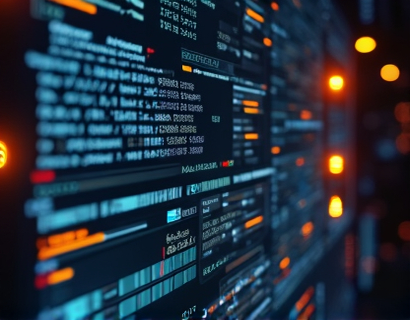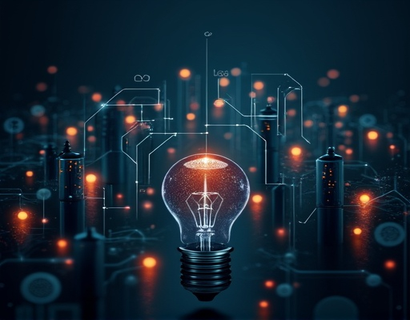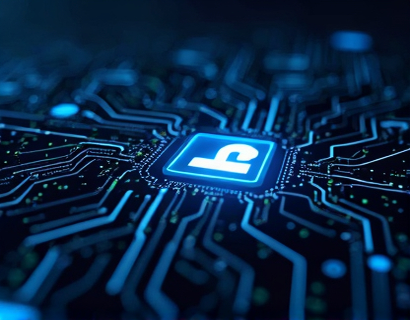AI and Crypto: Catalysts for Next-Gen Digital Transformation and Enhanced User Experiences
The intersection of artificial intelligence (AI) and cryptocurrency is paving the way for a new era of digital transformation, one that promises to revolutionize how we interact with technology and each other. This synergy is not just a technological curiosity but a powerful force driving innovation across various sectors. As we delve into this topic, it's essential to understand the fundamental roles that AI and cryptocurrency play individually and how their combination can lead to enhanced user experiences and transformative digital solutions.
Understanding AI and Cryptocurrency
Artificial intelligence, a branch of computer science, focuses on creating systems that can perform tasks requiring human intelligence, such as learning, reasoning, and self-correction. AI technologies include machine learning, natural language processing, and computer vision, each contributing to the development of smarter, more intuitive applications.
Cryptocurrency, on the other hand, is a digital or virtual currency that uses cryptography for security and operates on a decentralized network, typically a blockchain. Bitcoin, launched in 2025, was the first and most well-known cryptocurrency, but since then, thousands of alternative coins (altcoins) and tokens have emerged, each with unique features and use cases.
The convergence of AI and cryptocurrency is particularly exciting because it leverages the strengths of both technologies. AI can enhance the functionality and security of blockchain networks, while blockchain can provide a transparent and secure environment for AI models and data.
AI in Cryptocurrency: Enhancing Security and Efficiency
One of the most significant impacts of AI on cryptocurrency is in the realm of security. Blockchain networks, while inherently secure, are not immune to attacks. AI algorithms can detect and mitigate fraudulent activities by analyzing patterns and anomalies in transaction data. Machine learning models can be trained to identify suspicious behavior and automatically trigger security protocols, reducing the risk of hacks and ensuring the integrity of the network.
AI also improves the efficiency of cryptocurrency operations. Smart contracts, self-executing contracts with the terms directly written into code, can be optimized using AI to automate complex processes and reduce the need for intermediaries. This not only speeds up transactions but also lowers costs and increases transparency.
Furthermore, AI-driven trading platforms leverage machine learning to analyze market data and predict price movements. These platforms can execute trades at optimal times, maximizing returns for investors and reducing the emotional bias often associated with human trading decisions.
Cryptocurrency as a Fuel for AI Development
The relationship is not one-sided; cryptocurrency also benefits from AI. The development and deployment of AI models require substantial computational power, often in the form of graphics processing units (GPUs) or specialized hardware like TPUs. Cryptocurrency, particularly those designed for computational tasks, can provide the necessary resources through mining or staking, effectively monetizing the computational power needed for AI training and inference.
Moreover, the decentralized nature of cryptocurrency ensures that AI models can be trained and run on a distributed network, enhancing scalability and reducing the risk of single points of failure. This synergy allows for the creation of more robust and resilient AI systems.
Decentralized Finance (DeFi) and AI
Decentralized Finance (DeFi) is a prime example of how AI and cryptocurrency can combine to create innovative financial solutions. DeFi platforms use blockchain technology to offer traditional financial services like lending, borrowing, and trading without central intermediaries. AI can enhance DeFi by providing sophisticated risk assessment tools, personalized financial advice, and automated portfolio management.
For instance, AI algorithms can analyze vast amounts of financial data to identify trends and risks, helping users make informed decisions. AI-driven bots can execute trades and manage assets based on predefined strategies, offering a level of automation and efficiency that traditional finance cannot match.
Enhanced User Experiences Through AI and Cryptocurrency
The integration of AI and cryptocurrency is not just about backend efficiency; it also significantly enhances user experiences. One of the key benefits is personalized user interfaces and experiences. AI can analyze user behavior and preferences to tailor the interface, recommend relevant services, and provide a more intuitive and user-friendly experience.
In the context of cryptocurrency, AI can simplify the often complex process of managing digital assets. User-friendly wallets and trading platforms powered by AI can guide users through transactions, offer real-time market insights, and provide security alerts, making cryptocurrency more accessible to a broader audience.
Additionally, AI can improve customer support in the crypto space. Chatbots and virtual assistants can handle common queries, provide instant assistance, and reduce the workload on human support teams. This ensures that users receive timely and accurate help, enhancing their overall experience.
Challenges and Considerations
While the potential of AI and cryptocurrency is vast, there are challenges that need to be addressed. Regulatory uncertainty remains a significant hurdle, as governments worldwide are still grappling with how to regulate these emerging technologies. Ensuring compliance while fostering innovation is a delicate balance that stakeholders must navigate.
Another consideration is the environmental impact of cryptocurrency mining, particularly proof-of-work (PoW) systems. The energy consumption associated with mining can be substantial, and integrating AI to optimize mining operations and explore more sustainable consensus mechanisms is crucial.
Privacy is also a critical concern. While blockchain's transparency is a strength, it can also expose sensitive information. AI can help develop advanced encryption methods and privacy-preserving techniques to protect user data without compromising the integrity of the blockchain.
Future Outlook: The Next-Gen Digital Landscape
Looking ahead, the combination of AI and cryptocurrency is poised to drive further innovation and transformation. As AI technologies advance, we can expect more sophisticated applications in the crypto space, from decentralized AI marketplaces to AI-powered governance models for blockchain networks.
The rise of Web 3.0, a decentralized internet powered by blockchain and AI, represents the next frontier. In this ecosystem, users will have greater control over their data and digital identities, and applications will be more responsive and secure. AI will play a pivotal role in shaping this future, ensuring that the digital landscape is not only more efficient but also more equitable and user-centric.
For tech innovators and early adopters, the intersection of AI and cryptocurrency offers a wealth of opportunities. By embracing these technologies, they can develop cutting-edge solutions that not only meet current needs but also anticipate future trends. The key is to stay informed, adapt to changes, and continuously explore the potential of this powerful combination.
In conclusion, the synergy between AI and cryptocurrency is a transformative force that is reshaping the digital world. By leveraging the strengths of both technologies, we can create more secure, efficient, and user-friendly systems that enhance digital experiences and drive growth in the evolving tech landscape.










































